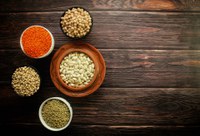Prairie Fare: Stay on the pulse of healthful eating
(Click an image below to view a high-resolution image that can be downloaded)
Food is a great pleasure for most people. I decided to treat myself to a fancy meal after a recent conference ended. All my colleagues had gone home, and I had an early flight the next day.
I made a reservation so I could be seated at the chef’s counter at the hotel. This was the “best seat in the house” according to the host.
The only downside was eating by myself next to a couple on a romantic date.
I texted my husband pictures as my meal arrived. He was eating leftover chili, poor guy.
I greatly exceeded my dinner reimbursement rate that evening and covered the difference on my own. This was definitely worth the splurge.
I was seated right in front of the open fire where they were preparing and plating food. I was studying what the chefs were doing.
I could have chosen octopus or steak tartare. I went with the more conservative (and fully cooked) smoked pork with sautéed chickpeas, green beans and braised cabbage. The fresh rolls with carrot hummus were very delicious.
The chef visited with me quite a while. He probably felt sorry for the woman eating alone.
I didn’t tell him that I work in the area of food and nutrition. I felt as though I were attending a cooking class with food made just for me.
The food was artfully arranged. We all eat with our eyes before we taste. They brought me a palate cleansing beverage before my main course.
I could get used to this lifestyle.
The chef had smoked the pork loin for two hours and seared it right before serving.
My husband could do that on our smoker, I figured. He’s the grill master in our house.
The cabbage was “pickled” then seared over the flame.
The sauce was made from cabbage remnants that were seasoned and cooked to be thick. That’s called a “cabbage reduction” in culinary terms.
The chickpeas and green beans were sautéed in olive oil with basil, some red pepper and fresh lemon juice. I could do that.
My meal was very nutritious with the ample vegetables and lean protein in appropriate portion sizes.
I probably didn’t need to eat three fresh buns and all the carrot hummus. I didn’t want them to go to waste, of course.
Any of the foods I was served, except the lemons, could have been grown in North Dakota.
I wonder if the chickpeas were grown in North Dakota, Montana or Washington. These three states lead the production of chickpeas in the U.S. according to the U.S. Department of Agriculture’s Agricultural Marketing Service.
If you do not cook with chickpeas and other foods in the pulse family, I encourage you to give these versatile foods a try.
You might be familiar with chickpeas as the main ingredient in hummus, a flavorful dip that has grown in popularity in recent years. Chickpeas also are known as “garbanzo beans.” Sometimes the labels on canned chickpeas show “chickpeas” on one side and “garbanzo beans” on the reverse side.
Chickpeas are used frequently in Mediterranean and Middle Eastern cuisine. These pulse foods are notable sources of protein with one cup providing nearly one-third of our daily protein needs along with nearly half of the dietary fiber recommendation.
I was not short on dietary fiber after having whole-wheat rolls, carrot hummus, chickpeas, green beans and cabbage. I think I met all of my nutrition needs for the day in one meal.
We adults need about 4 ½ cups of vegetables per day. Chickpeas and other pulses can count as a protein or as a vegetables. People following a vegetarian diet often use chickpeas, beans and other pulses as their protein source.
For people who cannot eat gluten, chickpeas can be made into flour to be used in baked goods.
After watching the highly-trained chefs seamlessly prepare food for numerous people, I was inspired to try my hand at some of the things I observed. Although recipes are handy, be a little adventuresome with food preparation and improvise.
We have done a lot of work with pulse foods for many years at NDSU. Pulses are the edible seeds of legumes with a history dating back 11,000 years. Pulses include a wide range of beans, lentils and peas that are harvested dry.
At NDSU Extension, we have pulse recipes and nutrition information to explore. Search online for "NDSU Extension beans, lentils and chickpeas" for more information on preparing beans, lentils, chickpeas and split peas.
Since I do not have the actual recipes from my culinary adventure, I will provide a fall-inspired recipe we tested at NDSU.
Apple Spice Hummus
2 (15-oz.) cans chickpeas, drained and rinsed
2 medium golden delicious apples, peeled and chopped (or your favorite apples)
⅓ cups freshly squeezed lemon juice
½ cups creamy peanut butter
2 to 3 tablespoons water
½ teaspoon salt
1 teaspoon cinnamon
¼ teaspoon nutmeg
½ teaspoon allspice
¼ teaspoon cayenne pepper, optional
Apple slices, carrot slices and/or whole-wheat crackers
In a food processor bowl or blender container, place the following ingredients: chickpeas, apple, lemon juice, peanut butter, water, salt and spices. Cover and process or blend until smooth; transfer to bowl. Cover and refrigerate up to three days. Serve dip with apple slices, carrot slices and/or whole-wheat crackers.
Makes 14 servings (1/4 cup each). Each serving has 160 calories, 6 grams (g) fat, 6 g protein, 20 g carbohydrate, 2 g fiber and 280 milligrams sodium.
(Julie Garden-Robinson, Ph.D., R.D., L.R.D., is a North Dakota State University Extension food and nutrition specialist and professor in the Department of Health, Nutrition and Exercise Sciences. Follow her on Twitter @jgardenrobinson)
NDSU Agriculture Communication – Oct. 6, 2022
Source: Julie Garden-Robinson, 701-231-7187, julie.garden-robinson@ndsu.edu
Editor: Elizabeth Cronin, 701-231-5391, elizabeth.cronin@ndsu.edu




